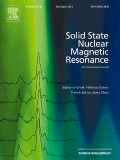
SOLID STATE NUCLEAR MAGNETIC RESONANCE
Scope & Guideline
Unveiling the Secrets of Solid-State NMR Science
Introduction
Aims and Scopes
- Solid-State NMR Techniques:
This area includes the development and refinement of NMR methodologies specifically tailored for solid materials, such as magic angle spinning (MAS), dynamic nuclear polarization (DNP), and various recoupling techniques. - Material Characterization:
The journal emphasizes the characterization of organic and inorganic solids, metal-organic frameworks (MOFs), and pharmaceutical compounds using solid-state NMR, providing insights into their structural and dynamic properties. - Theoretical and Computational Studies:
Research that investigates theoretical aspects of NMR spectra, chemical shielding, and spin dynamics is a key focus, often employing computational methods to support experimental findings. - Biomolecular Applications:
Solid-state NMR is applied to study biomolecules, including proteins and peptides, emphasizing interactions, dynamics, and structure determination relevant to biological systems. - Nanoscience and Advanced Materials:
The journal publishes studies exploring the application of solid-state NMR in nanoscience, including the investigation of nanostructured materials and their properties.
Trending and Emerging
- Dynamic Nuclear Polarization (DNP):
DNP techniques are increasingly being highlighted for their ability to enhance signal sensitivity in solid-state NMR, particularly in the study of biological materials and complex organic solids. - Multinuclear and Multidimensional NMR:
There is a growing trend towards using multinuclear NMR techniques and multidimensional approaches, which provide richer datasets for analyzing complex materials and biomolecules. - In Situ and Operando NMR Studies:
Research focusing on in situ and operando NMR methods is emerging, reflecting the need for real-time analysis of dynamic processes in materials such as batteries and catalysts. - Integration of Computational Methods:
The combination of experimental solid-state NMR with computational modeling is gaining traction, allowing for deeper insights into molecular dynamics and interactions. - Nanostructured Materials and Biomaterials:
There is an increasing focus on the application of solid-state NMR to nanostructured materials and biomaterials, emphasizing their unique properties and potential applications in various fields.
Declining or Waning
- Traditional NMR Applications:
There is a noticeable decrease in studies focusing solely on traditional NMR applications in solution-phase chemistry, as the field moves toward more complex solid-state investigations. - Basic Spectroscopic Techniques:
Research that explores foundational spectroscopic techniques without significant new contributions or applications appears to be waning, likely due to a shift towards more innovative and complex methodologies. - Static NMR Techniques:
Static NMR studies are being replaced with fast MAS and dynamic techniques that yield higher resolution and more informative data, indicating a decline in interest in less advanced static methods.
Similar Journals
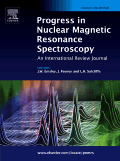
PROGRESS IN NUCLEAR MAGNETIC RESONANCE SPECTROSCOPY
Shaping the Future of NMR ApplicationsPROGRESS IN NUCLEAR MAGNETIC RESONANCE SPECTROSCOPY, published by PERGAMON-ELSEVIER SCIENCE LTD, is a premier journal dedicated to advancing the field of Nuclear Magnetic Resonance (NMR) spectroscopy, catering to a wide audience of researchers, professionals, and students engaged in analytical chemistry, biochemistry, materials science, and nuclear physics. With an impressive reputation reflected in multiple Q1 rankings across its relevant categories for 2023, this journal is recognized for its high-quality publications that contribute significantly to the understanding and application of NMR techniques. Although not open access, it remains a vital resource for those seeking to push the boundaries of scientific knowledge and innovation in various disciplines. Published continuously since 1965, this journal not only archives a rich history of NMR research but also presents cutting-edge findings and methodologies, making it an essential reference for anyone involved in this evolving field. The journal’s focus on impactful research, evidenced by its strong Scopus rankings, ensures a scholarly platform where the latest advancements meet the methodological rigor needed for real-world applications.
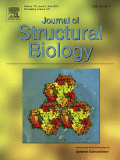
JOURNAL OF STRUCTURAL BIOLOGY
Your Gateway to Groundbreaking Structural Biology DiscoveriesJOURNAL OF STRUCTURAL BIOLOGY, published by Academic Press Inc. Elsevier Science, is a prestigious peer-reviewed journal dedicated to advancing the field of structural biology. With an impressive Impact Factor and recognized as a Q1 journal in its category for 2023, it holds a significant position in the academic community, ranked 20th out of 49 in the Scopus Biochemistry, Genetics and Molecular Biology - Structural Biology category. The journal publishes groundbreaking research that contributes to our understanding of biological macromolecules and their complexes, span from 1990 and continuing through 2024. Researchers and professionals alike rely on this journal for high-quality articles that cover a wide array of techniques including X-ray crystallography, NMR spectroscopy, and cryo-electron microscopy. Although it does not operate under an Open Access model, the journal remains a vital resource for those in academia and industry searching for the latest findings and methodologies in structural biology.
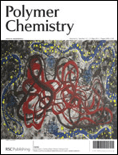
Polymer Chemistry
Connecting Disciplines through Polymer ChemistryPolymer Chemistry is a premier peer-reviewed journal published by the Royal Society of Chemistry, focusing on cutting-edge research and developments in the field of polymer science. With its ISSN 1759-9954 and E-ISSN 1759-9962, this journal has established a significant impact within the academic community, as evidenced by its impressive Q1 ranking in areas such as Biomedical Engineering, Organic Chemistry, and Polymers and Plastics. Over its convergence period from 2010 to 2024, Polymer Chemistry has become an essential resource for researchers, professionals, and students, showcasing innovative studies that advance the understanding of polymer behavior and applications. The journal does not currently offer open access, allowing for a traditional but rigorous peer-review process ensuring high-quality publications. For those engaged in the rapidly evolving disciplines of biochemistry and bioengineering, Polymer Chemistry serves as a vital platform for disseminating influential findings and fostering interdisciplinary collaboration in a global context.
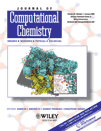
JOURNAL OF COMPUTATIONAL CHEMISTRY
Pioneering Computational Methods for Modern ChemistryThe Journal of Computational Chemistry, published by Wiley, is a premier platform in the fields of computational chemistry and computational mathematics. Established in 1980 and continuing through 2024, this journal serves as an essential resource for researchers, professionals, and students seeking to advance their understanding and application of computational methods in chemical research. With a commendable impact factor and ranking in the top quartile (Q2) for both Chemistry and Computational Mathematics, it boasts impressive Scopus rankings—22nd out of 189 in Computational Mathematics and 102nd out of 408 in General Chemistry, indicating its strong influence within these scientific communities. While it does not offer open access, the Journal of Computational Chemistry remains a vital venue for disseminating groundbreaking research and fostering collaboration in the computational science landscape. For those at the forefront of innovation, staying abreast of the latest findings published here is indispensable for advancing their work in theoretical and applied chemistry.
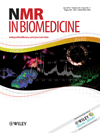
NMR IN BIOMEDICINE
Bridging NMR Techniques with Clinical ExcellenceNMR in Biomedicine is a prestigious journal published by Wiley that has been at the forefront of advancing research in the integration of Nuclear Magnetic Resonance (NMR) techniques within the realms of biomedicine since its establishment in 1988. With its ISSN 0952-3480 and E-ISSN 1099-1492, this journal focuses on the application of NMR across various scientific disciplines, including Molecular Medicine, Radiology, Nuclear Medicine and Imaging, and Spectroscopy. The journal is classified in the Q1 and Q2 quartiles as of 2023, showcasing its significant impact and contribution, particularly in Radiology and Spectroscopy, where it ranks in the top tier of its fields. The Scopus ranks reflect its esteemed position, with notable placements such as #70/333 in Radiology and #25/76 in Chemistry Spectroscopy. While Open Access options are not available, the journal remains committed to providing high-quality, peer-reviewed research that fosters innovation and collaboration within the scientific community. Researchers, professionals, and students are encouraged to explore the cutting-edge findings presented in this journal, as it continues to shape the future of biomedical applications of NMR.
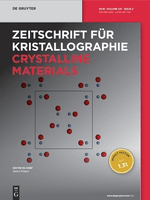
Zeitschrift fur Kristallographie-Crystalline Materials
Unveiling the Secrets of Crystalline MaterialsZeitschrift für Kristallographie-Crystalline Materials is a prestigious academic journal published by Walter de Gruyter GmbH, focusing on the intricate field of crystallography and its applications within condensed matter physics, inorganic chemistry, and materials science. Established in Germany, this journal spans a rich history from its inception in 1930 to its convergence years from 2012 to 2024, presenting cutting-edge research and developments in crystalline materials. With an impact factor reflective of its critical role within its field—ranking Q3 in the prestigious quartiles for 2023 across multiple categories—this journal serves as an essential platform for researchers, professionals, and students seeking to expand their knowledge and contribute to the advancement of crystalline materials. While currently not offering open access, the journal remains committed to disseminating high-quality, peer-reviewed articles that inspire innovation and collaboration within the scientific community.

CRYSTENGCOMM
Exploring the frontiers of crystal engineering and innovation.CRYSTENGCOMM is a distinguished journal published by the Royal Society of Chemistry, dedicated to advancing the field of crystallization and crystal engineering. With its impact factor consistently among the top tier in its category, CRYSTENGCOMM serves as an essential platform for researchers, professionals, and students in Chemistry, Condensed Matter Physics, and Materials Science. The journal has successfully maintained its relevance and influence since its inception, showcasing pioneering research from 1999 to 2024, with a commendable Q2 ranking in the latest evaluations. This accessibility to crucial developments in crystallization facilitates knowledge transfer across disciplines and enhances collaboration within the scientific community. Although it operates under a subscription model, the journal remains committed to disseminating cutting-edge research and fostering innovation in the field. For more information or to submit your research, please visit the Royal Society of Chemistry's website.
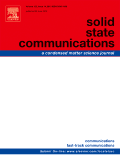
SOLID STATE COMMUNICATIONS
Advancing Knowledge in Chemistry and PhysicsSOLID STATE COMMUNICATIONS is a prestigious journal published by Pergamon-Elsevier Science Ltd, dedicated to disseminating cutting-edge research in the fields of Chemistry, Condensed Matter Physics, and Materials Chemistry. With an ISSN of 0038-1098 and an E-ISSN of 1879-2766, the journal has established itself as a vital resource for researchers and professionals seeking to explore the fundamental properties and innovative applications of solid-state materials. As of 2023, it boasts a commendable standing, ranking in the Q2 quartile across its various categories, reflecting its impactful contributions to the scientific community. The journal is indexed in Scopus, further validating its relevance and quality, with notable ranks close to the median percentile in key areas. While SOLID STATE COMMUNICATIONS does not currently offer Open Access options, it remains a highly regarded source for rigorous scientific inquiry and open discussions, with a publication history dating back to 1963 and continuing to 2024. The journal serves as an essential platform for disseminating groundbreaking findings and fostering collaboration within the vibrant fields of solid state science.

Biomolecular NMR Assignments
Exploring the dynamics of proteins through innovative NMR techniques.Biomolecular NMR Assignments is a prominent academic journal dedicated to advancing the field of biomolecular nuclear magnetic resonance (NMR) spectroscopy. Published by SPRINGER, this journal aims to provide a platform for researchers to share significant findings, methodological advancements, and in-depth analyses related to protein structure, dynamics, and interactions through NMR techniques. Although not currently open access, it serves as a valuable resource for those in the fields of Biochemistry and Structural Biology, having established a respectable impact factor reflected in its category rankings within these disciplines. With its coverage spanning from 2007 to 2024, Biomolecular NMR Assignments continues to facilitate the exchange of knowledge among professionals and students, contributing to the growth and enhancement of contemporary scientific inquiry. Explore the intricacies of biomolecular studies in the Netherlands and beyond, where critical insights into molecular behavior and function converge.
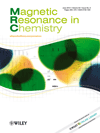
MAGNETIC RESONANCE IN CHEMISTRY
Pioneering Research in Chemistry and Materials ScienceMAGNETIC RESONANCE IN CHEMISTRY, published by Wiley, is a prominent journal dedicated to the advancement of knowledge in the field of magnetic resonance as applied to chemistry and materials science. With an ISSN of 0749-1581 and an E-ISSN of 1097-458X, this journal has been an essential resource for researchers since its inception in 1985, maintaining its reputation as a leading publication through its converged years up to 2024. Spanning diverse topics, the journal holds a Q2 quartile ranking in both the Chemistry (miscellaneous) and Materials Science (miscellaneous) categories, illustrating its significance in the academic community. With Scopus rankings placing it in the 61st percentile for General Chemistry and the 55th percentile for General Materials Science, this journal is an esteemed platform for original research, reviews, and critical discussions surrounding magnetic resonance methodologies and applications. As access options are not open, it ensures a curated dissemination of high-quality, peer-reviewed content to support professionals, researchers, and students in their scholarly endeavors.